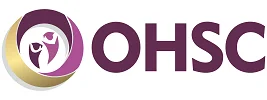The Signs of Autism in Children: A Brief FAQ
Identifying the signs of autism in children at the earliest possible stage often holds the key to effective management of the condition. Worldwide, it is estimated that up to 2% of people have an autism spectrum disorder (ASD) of some kind.
ASD is defined as a developmental disability attributed to abnormalities in the brain, for which the root cause remains unknown to the scientific community. Genetics are thought to play a role, but an individual’s risk of developing autism is difficult to predict and the condition is currently impossible to prevent.
The capacity for children and adults with autism to think, learn, socialise and solve problems differs significantly from one individual to the next. Whereas some autistic children need continuous and extensive help and support in their daily lives, others are more independent.
Likewise, some children with mild autism can be educated in a conventional school setting, whereas others benefit from a special education environment
When Do the Signs of Autism in Children Usually Appear?
Autism spectrum disorder usually begins before a child reaches three years of age and continues throughout the individual’s life. Where the early signs of autism are detected at a young age and appropriate intervention is provided, a child typically has a better long-term prognosis than when an ASD diagnosis is delayed.
Studies have indicated that where ASD is detected, the initial signs and symptoms are noticed in around one third of cases before the child is one year old. By 24 months of age, 80% to 90% of cases of autism are identifiable by a variety of typical signs and symptoms.
However, it is important to understand that none of the characteristic signs and symptoms of autism can be used as the basis for a formal diagnosis in their own right.

What Are the Early Signs of Autism in Babies?
It can be particularly difficult to detect the early signs of autism in younger babies, as they are at such an early developmental stage. Many of the most characteristic signs of autism affect a child’s social skills and capacity to communicate, which in both instances are underdeveloped in younger babies.
However, there are several potential indicators of autism in younger babies that should not be overlooked if detected. Examples of which include:
- Lack of crying
- General lack of interest in surroundings
- Excessive activity levels
- Issues with motor development
- Not reacting to a parent’s voice
- Disinterest in feeding
- Lack of eye contact
- Withdrawal from parental touch
Many babies will display one or more of these behaviours as part of their normal developmental process. However, concerns regarding behaviours identified by parents should be brought to the attention of an appropriate professional at the earliest juncture.
What Are the Early Signs of Autism in Infants?
The early signs of autism in infants of a slightly older age (up to three years old) are usually more pronounced and therefore easy to identify. Many of which are similar to those of babies displaying early indications of autism, with additional warning signs to watch for.
Examples include:
- Repetitive or unusual use of language
- Hand flapping, spinning and twirling objects
- Inability or unwillingness to make eye contact
- Disinterest in socialising with peers
- Persistent fixation on objects
- Issues with spoken language development
- Appearing disengaged and apathetic
Again, any indication of developmental difficulties should be brought to the attention of a specialist for further investigation.
How is Autism Identified in Older Children?
The signs and symptoms of autism become increasingly pronounced after a child’s third birthday and throughout the years that follow.
Though there are significant differences from one child to the next, most children with autism will display one or more of the following behaviours:
- Fear of change and insistence on sameness
- Inappropriate use of language and repetition
- Crying and laughing at seemingly random times
- Little to no interest in socialising
- Unpredictable bursts of anger and frustration
- Lack of responsiveness to acts of affection
- Underactivity or overactivity
- Impaired motor skills
- A preference to be alone and avoid social contact
Each of these symptoms can be mild, moderate or severe in nature, though in all instances should be acted upon accordingly.
Are Mild Autism Symptoms a Cause for Concern?
Mild autism symptoms should never be overlooked or misinterpreted as a normal component of a child’s development.
It is often when mild symptoms of autism are identified and acted upon at the earliest possible stage that a child has the best chance of a positive long-term outlook.
How Do the Signs of Autism in Boys Differ from the Signs of Autism in Girls?
There is no direct difference between the signs of autism in boys and the signs of autism in girls. However, research suggests that boys are significantly more likely to develop an ASD.
Figures differ from one study to the next, but it is estimated that while one in every 42 males is diagnosed with autism, the ratio is closer to one in 189 females. There are also some studies that suggest diagnosis of autism typically occurs later with girls than boys, though this is disputed.
Are There Effective Treatments Available for Autism?
The most effective treatment for any case of autism is the tailored and individual support the child needs to compensate for their developmental delays, social issues and cognitive impairments.
There is, however, no specific treatments for autism that can ‘cure’ the condition outright. Nor is there any known measure that can prevent autism, or reduce the likelihood of a child developing an ASD.
For more information about our Free Autism Course or to discuss our online college in more detail, contact a member of our admissions team today.


